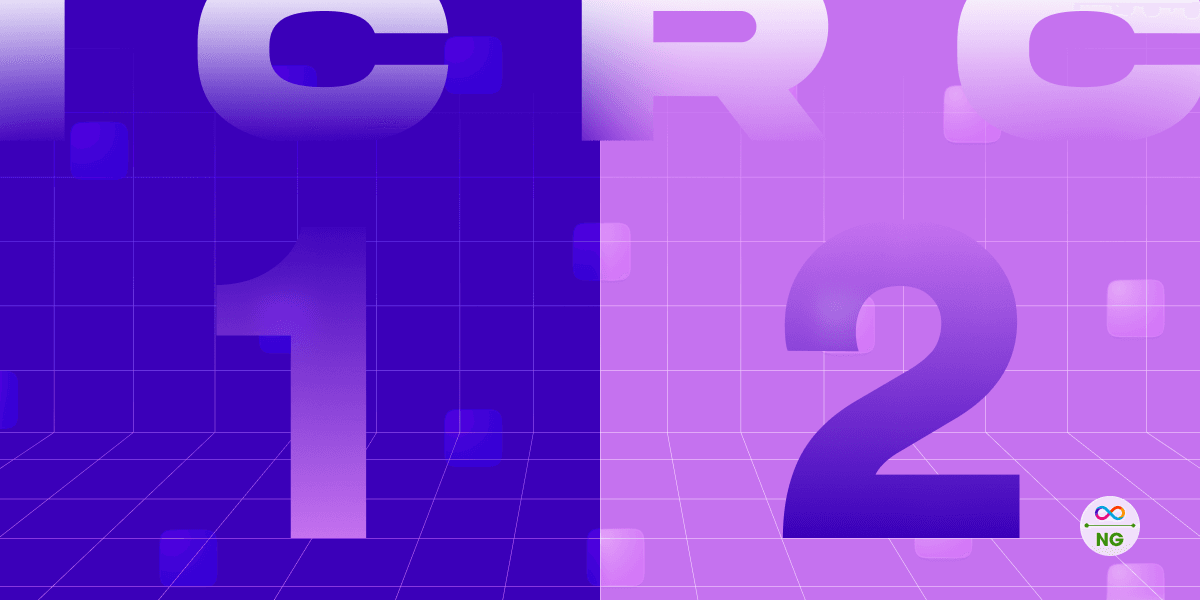
When building in Web3, token standards aren’t just helpful, they’re essential. They define how your smart contracts interact, how your assets move, and how users trust your system. On Ethereum, ERC-20 and ERC-777 paved the way. On the Internet Computer, ICRC-1 and ICRC-2 take things to the next level.
These aren’t just "equivalents" of older standards; they’re developer-oriented, canister-native, and modular by design. And if you’re serious about building a DeFi protocol, a DEX, a DAO, or even a cross-chain liquidity app, you’ll want to understand what makes them powerful.
Understanding What ICRC Is?
ICRC stands for Internet Computer Request for Comments — a community-governed standardisation process, much like Ethereum’s ERC.
It ensures you’re not building in isolation. The standards are vetted, documented, and optimised for long-term composability across the Internet Computer ecosystem. And because ICP doesn’t rely on gas fees in the traditional sense and scales web-speed dapps natively, you’re building on architecture that actually grows with your users.
ICRC-1: The Standard for Fungible Tokens
At its core, ICRC-1 defines the interface for fungible tokens, similar to ERC-20. But unlike Ethereum, this standard is designed to run on canisters, which are not just smart contracts, but are self-contained compute units capable of hosting entire applications.
The ICRC-1 standard supports:
- Transfers between accounts
- Balance queries
- Supply reporting
- Metadata fetching (name, symbol, decimals, etc.)
What stands out is its simplicity + scalability. You're not forced to implement bloated logic or wrap everything in multiple contracts. And with built-in upgradeability and low-latency interactions, this becomes an incredibly practical choice for projects that need to launch and iterate quickly.
If you’re bootstrapping a launchpad, building a tokenized reward system, or spinning up liquidity pools, ICRC-1 gives you a lightweight, reliable foundation.
ICRC-2: Advanced Token Permissions for DeFi
ICRC-2 builds on ICRC-1 to introduce approval and allowance functionality, much like ERC-777 or ERC-2612.
This gives you:
- approve and transfer_from methods for delegated transfers
- Better UX for DEX trades and liquidity operations
- Gasless workflows and cross-canister logic handling
- Clear extensibility for future use cases
Let’s say you're building an automated yield aggregator. With ICRC-2, users can approve their vault canister to spend their tokens without transferring ownership first, all while keeping control. That’s core DeFi functionality, built directly into the Internet Computer’s standards.
You're probably asking: Why should I adopt ICRC instead of rolling my own logic or sticking to what I know on EVM?
Here’s the thing:
- ICRC is modular — you can start with ICRC-1 and plug in ICRC-2 only when needed.
- It’s interoperable — standardised interfaces mean tools, wallets, and other dapps can integrate with minimal friction.
- It’s Web3-native — works seamlessly with ICP’s Internet Identity for auth, cycles for computation, and cross-canister calls for composability.
You're building on a chain that supports Bitcoin integration natively, runs with no centralized cloud dependencies, and allows you to ship full-stack apps entirely on-chain.
You don’t need to reinvent the wheel. The DFINITY community and ICP devs have already open-sourced:
- ICRC token libraries in Motoko and Rust
- Test suites and certification mechanisms
- Canister templates for rapid deployment
You can also tap into ICP’s SNS (Service Nervous System) to launch fully autonomous DAOs with ICRC tokens, or integrate Internet Identity for seamless user auth without seed phrases.
Conclusion
ICRC isn’t trying to copycat, it’s a reimagination of how token standards should work when you remove gas constraints, make scalability a default, and treat smart contracts as full-stack services.
Whether you're transitioning from EVM or exploring the Internet Computer for the first time, understanding and using ICRC-1 and ICRC-2 puts you ahead of the curve. These standards are battle-tested, community-backed, and extensible for whatever comes next in DeFi, GameFi, and beyond.
Article By: Mana Lamja